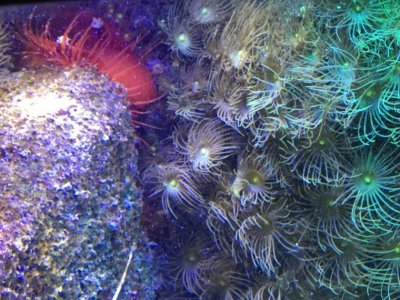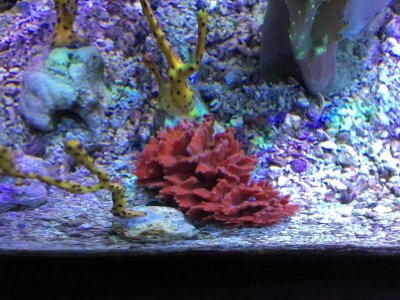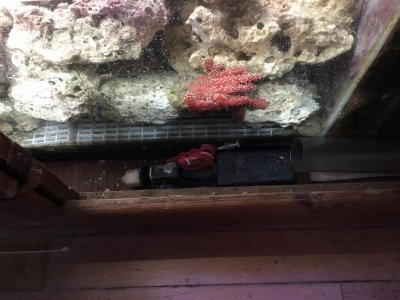Scrubber_steve
I'm really very likeable
Twinfallz, in the two links you posted that caught my eye was this qoute for removing the ats "and inorganic nutrient levels were low." One thing I've learned is not having enough inorganics is as much a water quality issue as having too much.
Timfish; from your statement above, you are now misrepresenting what is actually stated in these papers in what appears to be an attempt to confirm your baseless conclusion that the Alage Turf Farm was removed for water quality issues.
The "and inorganic nutrient levels were low" you cut and pasted from 'The Coral Reef Exhibit at Reef HQ Aquarium, Townsville, Australia: Technical operations and water quality', was not referencing the ATF.
Here's what was said in the paper, Chapter 26, quote -
The Estuarine Water period (post-2002)
Water source and exchange
A significant shift occurred during 2002 when
the aquarium was closed to the public for almost
five months to maintain and upgrade the facility.
Based on the analysis of existing practices and
resulting low coral survival, this period was also
used as an important opportunity to modify
CRE operations, starting with its water source
and exchange. The driving forces behind these
changes were the obvious low coral survival
rates and the fact that calcium levels (~ 250
mg Ca2+.L-1, point readings available only) and
inorganic nutrient levels were low.
end quote.
The "and inorganic nutrient levels were low" statement is in reference to the change from pristein off shore water collection to Ross Creek water collection, not the ATF.
Further, in relation to the ATF, the paper chapter 26 states the following -
The Estuarine Water period (post-2002)
Filtration
During the same time period as the change from
oceanic water to estuarine water was occurring,
CRE filtration philosophy shifted away from the
Algal Turf Farm towards the implementation of
large-scale protein skimmers. Following several
water quality monitoring trials where sections
of the ATF were turned off, it was determined
that the ATF effects on CRE filtration were
negligible, especially when compared to the
CRE’s internal algal mass productivity. The
ATF was considered obsolete and taken offline
permanently from the CRE in late 2002
Further, from -
Ecological purification in the captive reef – natural approaches to water quality management Ashley Sharp Zoological Society of London
Algal nutrient management
Case studies
In a case study conducted within the large reef exhibit (2.8 million litres) at Reef HQ, Townsville, Australia, the total biomass of algae supported directly on the ATS screens was approximately 0.5 % of the total algal biomass within the system (Pecorelli et al., in press). Consequently when the ATS was taken offline, the ability of the mesocosm to process nitrite and nitrate was not significantly affected. Indeed orthophosphate levels were significantly lower after the removal of the ATS, suggesting that the rupturing of the algal cells during harvesting was causing orthophosphate to return to the system.
Nevertheless, the nutrient processing capabilities of algae within any exhibit will depend upon a multitude of factors such as grazing pressure and light levels, therefore the use of remote vessels such as the ATS screens and refugia remain extremely useful tools to optimize algal growth.
https://www.burgerszoo.com/media/560510/chapter-11.pdf
The Algae Turf Farm was not removed from the Coral Reef Exhibit because of water quality issues.
The Algae Turf Farm was removed because the labour intensive managment of 70 scrubber units could not be justified when they only accounted for 0.5% of the total algal biomass within the system .
I'm not interested in flogging a dead horse any further, here or on your skimmerless thread.
Last edited:



